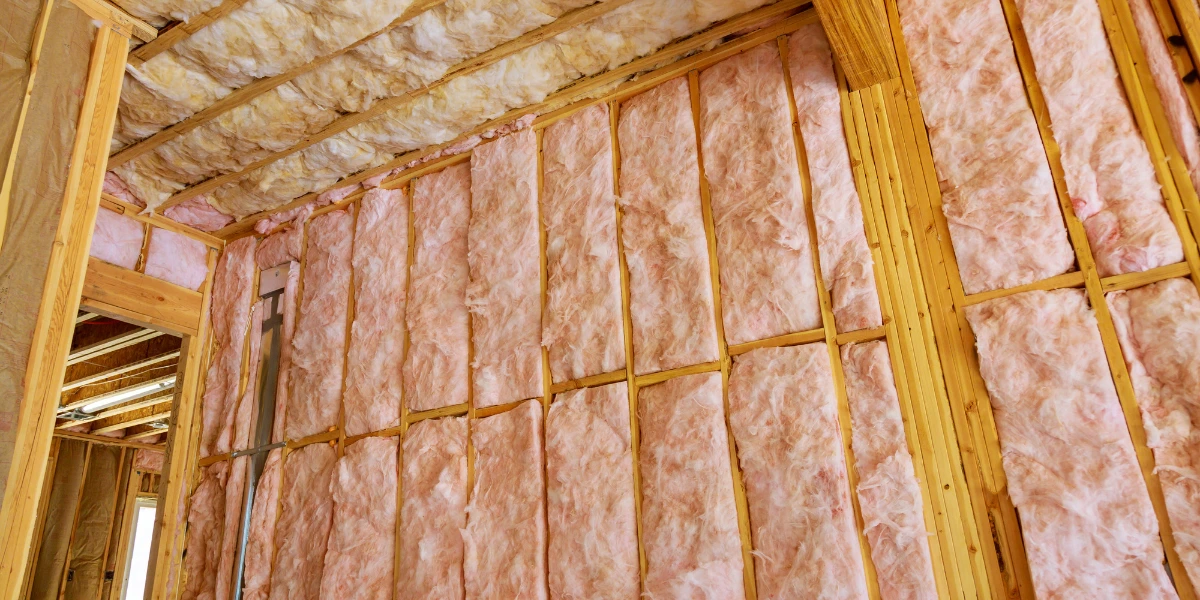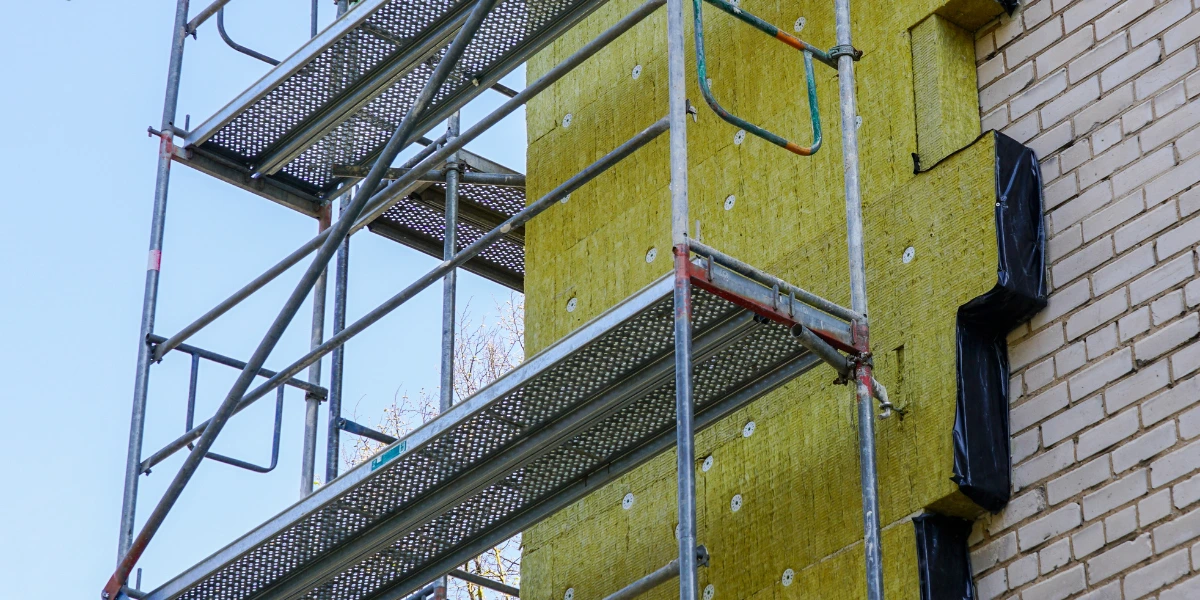
- Blog
- 27 Jan 2025
Best Thermal Insulation Materials for Your Building
Choosing the right thermal insulation materials is key to ensuring energy efficiency and comfort in any building. With many options available, it’s important to understand the different types of materials and their benefits. One innovative option is the insulation plaster with expanded glass beads. This type of plaster provides superior insulation compared to traditional foam board insulation and offers additional benefits like easier application and long-term durability. In this guide, we will discuss the factors to consider when choosing insulation, the types available, and how options like expanded glass beads stack up against traditional materials.
Factors to Consider When Choosing Thermal Insulation Materials
Choosing the right thermal insulation materials for your building can make a big difference in energy savings and comfort. The right choice depends on several factors, such as the local climate, building design, and energy efficiency goals. Let’s look at what you need to consider when selecting insulation materials.
Climate and Location
Climate plays a huge role in deciding which thermal insulation materials are suitable for your building. In colder climates, insulation needs to provide high levels of heat retention, while in hotter climates, the focus is more on keeping heat out. The location of the building can also determine the insulation material used, as some materials perform better in specific environments. For instance, in areas with high moisture, materials that resist water damage are essential.
Building Design and Structure
The type of building, its structure, and design are also important considerations. Different materials work better with different building styles. For instance, a commercial building might benefit more from spray foam insulation, while a residential building could use traditional fiberglass or mineral wool. The design also affects how easy it is to install certain insulation types, which can impact labor costs and efficiency.
Energy Efficiency and R-Value
R-value is a measure of how well an insulation material resists the flow of heat. The higher the R-value, the better the material is at insulating. When choosing thermal insulation materials, it is important to consider the energy efficiency of the building and the R-value needed to achieve it. Higher R-value materials will keep the building warm in the winter and cool in the summer, contributing to energy savings. Understanding how much insulation your building needs based on your energy goals will help you make an informed decision.
Types of Thermal Insulation Materials for Buildings
There are various thermal insulation materials available, each with its own advantages. Let’s look at some of the common types of insulation used in buildings.
Fiberglass Insulation
Fiberglass insulation is one of the most commonly used types of thermal insulation materials. It is made of fine glass fibers and is often used in walls, attics, and floors. It is affordable and provides good thermal resistance. Fiberglass insulation comes in rolls or batts, making it easy to install. While it is effective, proper protective gear is needed when installing fiberglass, as the small glass fibers can be irritating to the skin and respiratory system.
Mineral Wool (Rock Wool and Slag Wool)
Mineral wool, also known as rock wool or slag wool, is another popular thermal insulation material. As one of the widely used thermal insulation materials, it is made from volcanic rock or industrial by-products and has excellent thermal and sound insulation properties. Mineral wool is fire-resistant, making it ideal for areas where fire safety is a concern. Additionally, it is resistant to mold and mildew, which makes it a great option for damp environments.
Foam Board Insulation

Foam board insulation is made from rigid panels of insulating foam and is commonly used for insulating foundation walls, floors, and ceilings. It provides high insulating values with relatively thin layers. PVC foam, which is a type of foam board, is also used due to its excellent thermal resistance and moisture resistance properties. Foam board insulation is easy to cut and shape, making it a versatile option for many applications.
Spray Foam Insulation
Spray foam insulation is among one of the thermal insulation materials as a flexible option that expands on application, filling gaps and sealing areas effectively. It provides an excellent air barrier and can be used in hard-to-reach areas, making it popular for attics and basements. Spray foam has a high R-value, which helps in maintaining energy efficiency. It can be applied as either open-cell or closed-cell foam, depending on the needs of the building. Closed-cell spray foam, in particular, offers a denser and more effective insulation layer.
Reflective or Radiant Barriers
Reflective or radiant barriers are often used in attics to reduce summer heat and decrease cooling costs. Unlike other thermal insulation materials that reduce heat flow by resisting it, radiant barriers reflect heat away from the building. These barriers are most effective in hot climates, where keeping the sun’s heat out is a priority. They work well when combined with other insulation types, offering an extra layer of energy efficiency.
Comparing Insulation Plaster with Expanded Glass Beads to Traditional Foam Board Insulation
When it comes to choosing insulation materials, one comparison worth noting is between insulation plaster with expanded glass beads and traditional foam board insulation. The expanded glass beads, like those found in STIKLOPORAS insulation plaster, offer several advantages over foam boards.
First, insulation plaster with expanded glass beads provides a lightweight but effective thermal barrier. As one of the advanced thermal insulation materials, the expanded glass beads act as high-quality core materials that help reduce heat transfer while also being easy to apply directly onto surfaces. This type of plaster also allows for better breathability, which is beneficial in reducing moisture accumulation and preventing mold growth—an issue that can sometimes affect foam boards.
On the other hand, traditional foam board insulation, such as PVC foam, has its benefits in terms of providing high R-values with thin layers and being easy to install in standard panels. However, foam boards can sometimes create challenges regarding air tightness, as any gaps left during installation may reduce the overall efficiency of the insulation layer. In comparison, plaster with expanded glass beads fills gaps and adheres seamlessly to surfaces, providing a more uniform insulating layer.
Another advantage of insulation plaster is that it is less prone to damage during installation or over time. Foam boards can crack or break under pressure, whereas the expanded glass bead plaster is more resilient and can be repaired easily if needed. For buildings that need both effective insulation and easy maintenance, insulation plaster with expanded glass beads can be a superior choice, especially in terms of reducing long-term maintenance costs and improving energy efficiency.
Sustainable and Eco-Friendly Thermal Insulation Materials
With the increasing focus on sustainability, many builders are now choosing eco-friendly thermal insulation materials. These materials not only insulate effectively but also have a minimal impact on the environment.
One such material is basalt fiber, which is made from volcanic rock and is both durable and sustainable. Basalt fiber offers good thermal insulation properties and is resistant to fire and chemicals, making it an excellent choice for green buildings. Natural fiber insulation, like sheep wool or cotton, is also gaining popularity due to its renewable nature and good insulating properties.
Glass fibre reinforcement is another eco-friendly option often used in building materials. It adds strength to insulation while keeping it lightweight. This type of reinforcement helps to create insulation products that are not only effective at reducing heat transfer but are also durable and less likely to degrade over time.
Finally, the use of core materials like expanded glass beads in insulation plaster can provide additional benefits. These core materials help create an effective barrier against heat transfer while also being lightweight and easy to apply. The combination of such core materials with traditional plaster offers a strong and efficient insulating layer for walls and other surfaces.
In conclusion, choosing the right thermal insulation materials for your building depends on various factors, including climate, building design, and energy efficiency goals. With so many types available, from fiberglass and mineral wool to foam boards and eco-friendly options like basalt fiber, it’s essential to select the material that best fits your needs. Sustainable options are increasingly important as we aim to reduce our environmental impact. By understanding the characteristics and benefits of different insulation materials, you can make an informed decision that ensures comfort, energy savings, and sustainability for your building.


